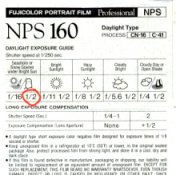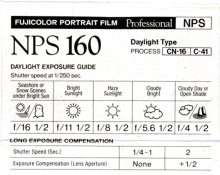One sixth of a stop??? Do you think that anyone can, or needs to be that accura....
In another life, all of the studios doing product photography had their lenses marked in 1/10 of an f stop.
We were doing all of the work using tranny film and as the end product was a printed colour catalogue, really accurate metering was required as the film had to have a highlight to shadow range of 3 stops maximum.
This range resulted in extremely superior colour reproduction in a four or five colour offset printing process.
Trust me when I say if you wish to photograph white or slightly off white fluffy towels, using a white or very light background as requested by the client. Then by keeping the exposure absolutely spot on at the start of the process, you could see the different fluffy white towels clearly in the catalogue.
FWIW All of the Hasselblads were very easy to work with, one metered exactly to a known standard, applied black or white reflectors to kill or lift light, adjusted the lens to the correct 1/10th of a stop then shot.
With the RB/RZ most photographers somewhere along the line forgot to allow for bellows extension. You could see immediately on the lightbox the difference.
The basic idea for this came from an american photographer who preached total control to save money. His name may have been Dean Collins, not sure. However we looked seriously into what he had to say, thought it could be worth it and set up one studio (out of fourteen) this way.
Initially it took about a week to get things going correctly. Going on memory, it was about 20 years ago, there was an immediate savings of film in the vicinity of 20%. With colour stats used for paste ups and layout there was a savings in time and stuffups.
Once the trannies were to be scanned we found that as they were so close in density, saturation, etc, etc, we could get the scanning done with far fewer problems.
The printers had a ball as the highlight to shadow dot didn't blow out or bog down, the client was over the moon as their main competitors catalogue looked pretty ordinary compared to theirs.
The total savings amounted to about 15% in actual costs and throughput increased dramatically once the film had been shot.
We were so impressed with this that we started looking at other ways to improve accuracy in exposure. Sinar had their meter probe for the GG on our 4x5 cameras. We tried them but it didn't really work out as hoped. Apart from that they were hopelessly overpriced and we just couldn't justify them. We did teach the Sinar rep how to use the probes a treat though!
Mick.









 From squinting it looks like F/16.5 at 1/250 with full sun. It's just sunny 16.
From squinting it looks like F/16.5 at 1/250 with full sun. It's just sunny 16.



